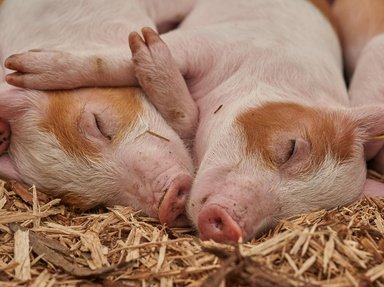
Porcine Phraseology and Nomenclature Quiz
The pig is one of man's major achievements in the domestication of animals. However the nomenclature of pigs is numerous, at times duplicative and sometimes ambiguous. This quiz attempts to address this particular issue.
A matching quiz
by 1nn1.
Estimated time: 4 mins.